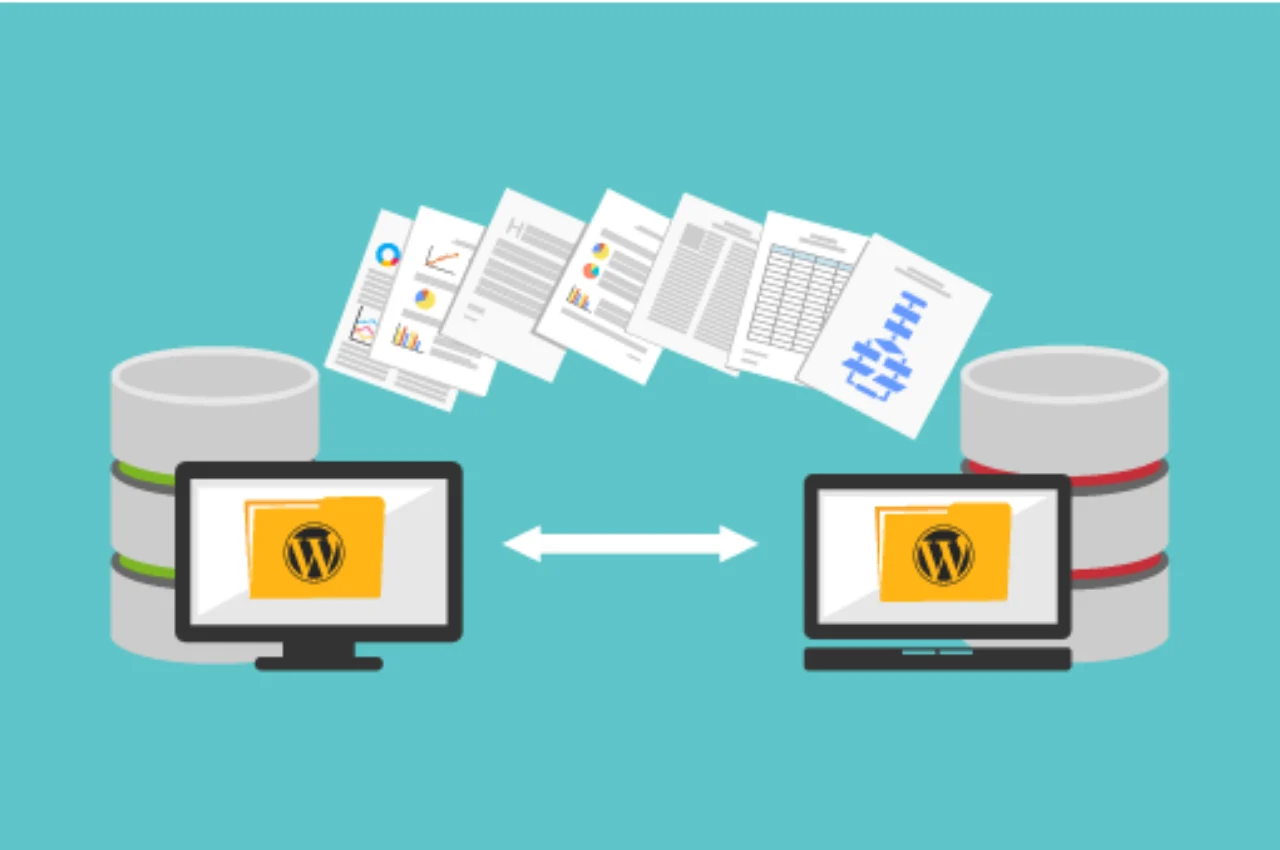To change web hosting providers, first, back up your website files and database. Then, transfer your domain to the new provider.
Changing web hosting providers is a crucial decision to improve website performance, security, and customer experience. To make the transition smooth and seamless, it’s important to take certain steps. Backing up your website files and database is the first crucial step to ensure you don’t lose any data during the migration process.
Remember to transfer your domain to the new provider and redirect any necessary DNS records. Once these steps are taken care of, you can confidently switch to a new web hosting provider without any hassle. A new provider can bring fresh opportunities for growth and improved services for your website.
Table of Contents
Assessment of Current Hosting Provider
When considering changing web hosting providers, the first step is to assess your current hosting provider. This involves critically evaluating your existing hosting plan, checking its performance, and assessing the level of support provided. A thorough assessment of your current hosting provider will help you make an informed decision when transitioning to a new hosting service.
Check Existing Hosting Plan
Assessing your current hosting plan is crucial to understanding the resources and limitations that you are currently working with. Look into the specific details of your plan, such as storage capacity, bandwidth, and any restrictions on usage. Understanding these elements will provide insights into whether your current hosting plan aligns with your website’s requirements and whether it offers room for growth.
Evaluate Performance and Support
Examining the performance of your current hosting provider is essential. Evaluate the uptime and loading speeds of your website, ensuring that it consistently delivers a smooth user experience. Additionally, assess the level of support provided by your current hosting company. Prompt and effective customer support is vital in addressing any technical issues or concerns that may arise.
Researching New Hosting Providers
When you decide to change web hosting providers, it’s important to conduct thorough research to make an informed decision. Taking the time to research different hosting options will ensure that you find a provider that meets your specific needs and offers the best possible service. In this article, we will explore the crucial steps involved in researching new hosting providers.
Identify Hosting Requirements
Before you start your research, it is essential to first identify your hosting requirements. Take a few moments to consider what you need from a hosting provider. This includes factors such as the type of website you have, the anticipated traffic volume, the amount of storage space required, and the level of technical support you expect.
Creating a list of your hosting requirements will help you determine which features are crucial for your website’s performance. This step will also make it easier for you to compare different hosting providers and their offerings.
Compare Different Hosting Options
Once you have a clear understanding of your hosting requirements, it’s time to compare different hosting options. There are many providers available, each offering various hosting plans to suit different needs. To find the right provider for you, consider the following:
- Price: Compare the prices of different hosting plans and ensure they fit within your budget. Be mindful of any additional costs such as domain registration fees or setup fees.
- Uptime: Look for hosting providers with a high uptime guarantee. Aim for at least 99.9% uptime to ensure your website remains accessible to visitors at all times.
- Scalability: Consider your future needs and whether the hosting provider can accommodate the growth of your website. Look for options to easily upgrade or downgrade your hosting plan as necessary.
- Customer Support: Check the support options available, such as 24/7 live chat, phone support, or email. It’s important to have reliable support in case you encounter any technical issues.
- Reviews and Reputation: Look for reviews and feedback from current or past customers to gauge the hosting provider’s reputation. This will help you assess their reliability, performance, and overall satisfaction of their services.
By comparing different hosting options based on these factors, you can narrow down your choices and select the provider that best aligns with your needs. Remember to consider both short-term and long-term requirements, as your hosting provider will impact your website’s performance and scalability.
Preparing For Migration
When it comes to changing your web hosting provider, proper preparation is essential to ensure a smooth and successful migration. Taking the time to back up your website data and notify stakeholders about the upcoming change can help minimize any potential disruptions and ensure a seamless transition. In this section, we will discuss the steps involved in preparing for migration.

Backup Website Data
Before you make any changes to your web hosting provider, it is crucial to back up your website data. This ensures that in the event of any unforeseen issues or errors during the migration process, you will have a copy of your website that can be restored easily. Here is a step-by-step guide:
- Access your current web hosting control panel.
- Locate the backup option and select it.
- Create a full backup of your website, including all files, databases, and email accounts.
- Choose a convenient location to save the backup file. It’s a good practice to save it in multiple locations for added security.
- Wait for the backup process to complete.
- Verify the integrity of the backup file to ensure it is error-free.
By following these steps, you can ensure that your website data is safely stored and ready to be migrated to your new hosting provider.
Notify Stakeholders About The Upcoming Change
Informing your stakeholders, including clients, business partners, and website users, about the upcoming change in your web hosting provider is essential. This not only allows them to be aware of the potential temporary downtime but also helps manage their expectations during the migration process. Here’s how you can do it:
- Create a list of stakeholders that need to be notified, including clients, suppliers, and team members.
- Compose a concise and informative email or announcement that clearly explains the upcoming change, highlighting the benefits and anticipated improvements.
- Include the scheduled date and time of the migration, as well as an estimated duration of any possible downtime.
- Provide contact information, such as a dedicated email address or support line, for stakeholders to reach out in case of any concerns or questions.
- Send the notification well in advance of the migration, allowing stakeholders sufficient time to make necessary adjustments or prepare for any downtime.
By notifying your stakeholders about the upcoming change, you establish clear communication and ensure that everyone is well-informed and prepared for the migration process.
Setting Up The New Hosting Account
Setting up a new hosting account is a crucial step in changing your web hosting provider. It requires careful consideration and attention to detail to ensure a smooth transition to your new hosting plan. In this section, we will walk you through the process of setting up your new hosting account, including choosing a suitable hosting plan and configuring domain settings.
Choose A Suitable Hosting Plan
When selecting a new hosting plan, it’s essential to consider your current website needs and potential future growth. Look for a plan that offers adequate storage, bandwidth, and reliable server uptime. Additionally, consider the type of hosting, whether it’s shared, VPS, or dedicated, based on your website’s requirements.
Configure Domain Settings
Once you’ve chosen the hosting plan, it’s time to configure the domain settings. This involves updating the domain’s nameservers to point to the new hosting provider. You can do this by accessing your domain registrar’s account and entering the nameserver information provided by your new hosting provider. Keep in mind that DNS propagation may take some time, so it’s recommended to make these changes during off-peak hours to minimize website downtime.
Transferring Website Files And Databases
Transferring website files and databases is a crucial part of changing web hosting providers. It ensures the seamless relocation of all your website data to the new hosting environment. Successful transfer of files and databases is vital for maintaining site functionality and preventing data loss.

Transfer Files Using Ftp Or Control Panel
To transfer files from your old web hosting provider to the new one, you can use FTP (File Transfer Protocol) or the control panel provided by your hosting service.
- Using FTP: Download and install an FTP client, such as FileZilla, and enter the connection details provided by your new hosting provider. Once connected, you can drag and drop files from your old hosting to the new one.
- Control panel: If the old hosting provider uses cPanel, Plesk, or another control panel, you can use the built-in file manager to compress and download your website files. Then, upload the compressed file to the new hosting provider’s control panel and extract the contents.
Migrate Databases
To migrate your website databases, you need to export the database from the old hosting provider and import it into the new one. The process may vary depending on the database management system (e.g., MySQL, PostgreSQL) your site uses.
- Export databases: Use the database management tool provided by your old hosting provider to export the database as a SQL file. This file contains all the necessary data and structure of your website’s database.
- Import databases: In the control panel of your new hosting provider, use the database management tool to create a new database with the same name as the one from your old provider. Then, import the SQL file into this new database to ensure a smooth transition.
Testing The New Website
Check Website Functionality
Ensure that all website functions work correctly on the new hosting provider.
Perform Speed And Performance Tests
Run tests to gauge the speed and performance of the website on the new server.
Updating Dns Settings
If you are changing your web hosting provider, it’s essential to update your DNS settings to point your domain to the new hosting server. This process ensures that your website remains accessible to visitors without any downtime.
Point Domain To New Hosting Server
When changing your web hosting provider, you will need to update the DNS records for your domain to point to the new hosting server. This involves accessing your domain registrar’s control panel and making changes to the DNS settings.

Verify Proper Dns Propagation
After updating the DNS settings, it’s crucial to verify proper DNS propagation. This ensures that the updated DNS records have been distributed across the internet, allowing users to access your website from the new hosting server.
Canceling Old Hosting Account
To change web hosting providers, make sure to cancel your old hosting account before initiating the transfer process. Contact your current provider, follow their cancellation procedure, and ensure all data is backed up to avoid any disruptions during the transition.
Confirm Data Deletion
When canceling your old hosting account, it’s essential to confirm the deletion of your data to ensure a smooth transition to your new web hosting provider. The last thing you want is to lose valuable website content or files. Taking the necessary steps to secure your data is paramount.
- First, log in to your old hosting account using your credentials.
- Navigate to the settings or account management section.
- Look for options related to data or file deletion.
- Before proceeding, make sure to back up any important files or data from your old hosting account.
- Double-check and confirm that you have retrieved all the necessary files.
- Once you are certain, follow the instructions provided to delete your data.
- Confirm the deletion to ensure your old hosting provider erases all your information from their servers.
Retrieve Any Remaining Refunds
Aside from canceling your old hosting account, you may also be eligible for a refund based on the terms and conditions of your previous hosting provider. Retrieving any remaining refunds can help offset the costs of transitioning to a new hosting provider while maximizing your savings. Here’s how you can go about it:
- Review your previous hosting provider’s refund policy on their website or contact their customer support for assistance.
- Keep track of any unused registration fees, subscription charges, or prepaid hosting services.
- Check if there are any requirements or deadlines for submitting refund requests.
- Prepare the necessary documentation, such as invoices or proof of payment, to support your refund claim.
- Submit your refund request through the designated channel provided by your old hosting provider.
- Follow up on your refund claim and maintain open communication with their support team until the issue is resolved.
- Once you receive your refund, record the transaction for future reference.
Frequently Asked Questions
How Do I Move From One Web Host To Another?
To move web hosts, first select a new host and plan. Then, backup your website files and database. Next, upload these files to your new host and update your domain’s DNS settings. Finally, test your website on the new host before canceling the old hosting plan.
How To Switch Domain Hosts?
To switch domain hosts, first, backup your website and email data. Then, set up the new hosting account. Finally, update your domain’s DNS settings to point to the new host. Verify the migration and cancel the old hosting account.
How Long Does It Take To Transfer A Website From One Host To Another?
Transferring a website can take 1-7 days, depending on size and complexity. A simple site may transfer faster, while larger or more complex sites require more time.
Can I Move My Domain Name To Another Provider?
Yes, you can move your domain name to another provider.
Conclusion
Changing web hosting providers can be a daunting task, but with careful planning and execution, you can successfully migrate your website without experiencing any downtime or losing valuable data. By following the steps outlined in this guide, you can ensure a smooth transition to a new web hosting provider and experience improved performance and reliability for your website.


